Tai Sui
| Tai Sui | |||||||
| Traditional Chinese | 太歲 | ||||||
|---|---|---|---|---|---|---|---|
| Simplified Chinese | 太岁 | ||||||
| |||||||
Tai Sui is a Chinese term for the stars directly opposite Jupiter during its roughly 12-year orbital cycle. Personified as deities, they are important features of Chinese astrology, Feng Shui, Taoism, and Chinese Buddhism to a lesser extent.
Description
The 12 signs of the Chinese zodiac are based on divisions of the Jovian orbital cycle, rather than—as with the western zodiac—the apparent motion of the sun relative to the celestial sphere. The star thought to oppose Jupiter during each year of the cycle was personified as a Heavenly General (zh:甲子神列表) or Cycle God. These were believed to assist the Jade Emperor in controlling the mortal world. Their number was later quintupled to 60, based on the combinations of the twelve divisions (reckoned using the earthly stems) with the five Chinese elements of fire, earth, metal, water, and wood. Each of the gods' features and attributes signifies the well-being of that year. For example, if the Tai Sui of the year holds a pen, it signifies political unrest for that particular year. On the other hand, if the Tai Sui of the year holds a spear or sword, it signifies the need to work hard and excel for that year.
Practices
In Taoism, those whose birth sign or other features clash with the Tai Sui of the year will face misfortunes or disturbances for the whole current year. They are advised to conduct a prayer session with a priest to propitiate the deity, ensuring peace and good fortune during the year. Each year, this applies to people born under 4 out of the 12 zodiac signs. In 2017, for example, it applied to people born in the years of the Rat, Rabbit, Horse and Rooster. Talismans thought to protect against Tai Sui are sold in many areas.
In Chinese culture it has been traditionally considered taboo to build a house facing Taisui (or in the directly opposite direction) in the corresponding year of the Chinese zodiac. A similar belief is associated with moving houses and the line drawn through the old and new dwellings.[1][2]
| 60 Heavenly General of Tai Sui | |||||||||
|---|---|---|---|---|---|---|---|---|---|
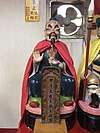 甲子太歲 金辨大將軍 | 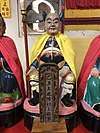 乙丑太歲 陳材大將軍 | 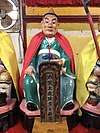 丙寅太歲 耿章大將軍 |  丁卯太歲 沈興大將軍 | 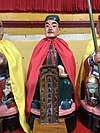 戊辰太歲 趙達大將軍 |  己巳太歲 郭燦大將軍 |  庚午太歲 王濟大將軍 | 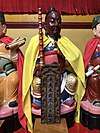 辛未太歲 李素大將軍 | 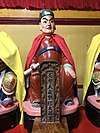 壬申太歲 劉旺大將軍 |  癸酉太歲 康志大將軍 |
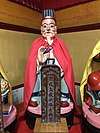 甲戌太歲 施廣大將軍 | 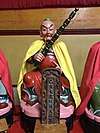 乙亥太歲 任保大將軍 | 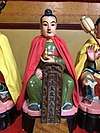 丙子太歲 郭嘉大將軍 | 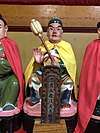 丁丑太歲 汪文大將軍 | 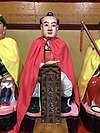 戊寅太歲 魯先大將軍 | 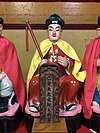 己卯太歲 龍仲大將軍 | 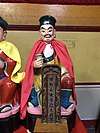 庚辰太歲 董德大將軍 | 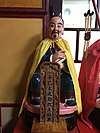 辛巳太歲 鄭但大將軍 | 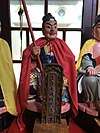 壬午太歲 陸明大將軍 | 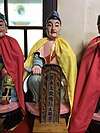 癸未太歲 魏仁大將軍 |
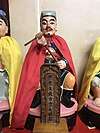 甲申太歲 方傑大將軍 | 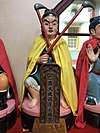 乙酉太歲 蔣崇大將軍 | 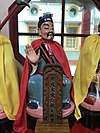 丙戌太歲 白敏大將軍 | 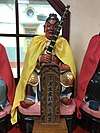 丁亥太歲 封濟大將軍 | 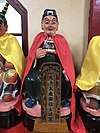 戊子太歲 鄒鐺大將軍 | 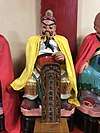 己丑太歲 傅佑大將軍 | 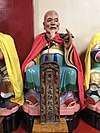 庚寅太歲 鄔桓大將軍 | 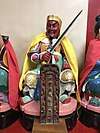 辛卯太歲 范寧大將軍 | 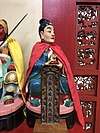 壬辰太歲 彭泰大將軍 | 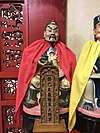 癸巳太歲 徐單大將軍 |
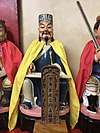 甲午太歲 章詞大將軍 |  乙未太歲 楊仙大將軍 | 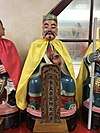 丙申太歲 管仲大將軍 | 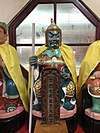 丁酉太歲 唐傑大將軍 | 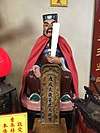 戊戌太歲 姜武大將軍 | 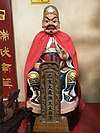 己亥太歲 謝太大將軍 | 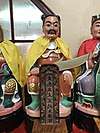 庚子太歲 盧秘大將軍 | 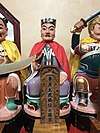 辛丑太歲 楊信大將軍 | 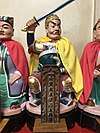 壬寅太歲 賀諤大將軍 |  癸卯太歲 皮時大將軍 |
 甲辰太歲 李誠大將軍 | 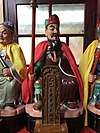 乙巳太歲 吳遂大將軍 | 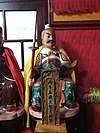 丙午太歲 文哲大將軍 | 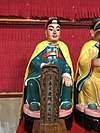 丁未太歲 繆丙大將軍 | 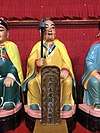 戊申太歲 徐浩大將軍 |  己酉太歲 程寶大將軍 | 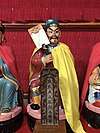 庚戌太歲 倪秘大將軍 | 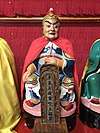 辛亥太歲 葉堅大將軍 |  壬子太歲 丘德大將軍 | 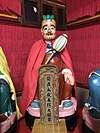 癸丑太歲 朱得大將軍 |
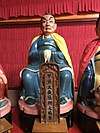 甲寅太歲 張朝大將軍 | 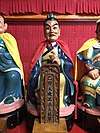 乙卯太歲 萬清大將軍 | 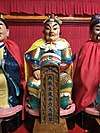 丙辰太歲 辛亞大將軍 | 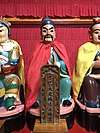 丁巳太歲 楊彥大將軍 | 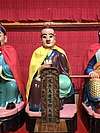 戊午太歲 黎卿大將軍 | 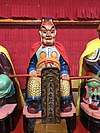 己未太歲 傅黨大將軍 | 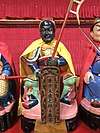 庚申太歲 毛梓大將軍 | 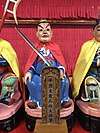 辛酉太歲 石政大將軍 | 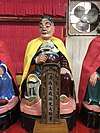 壬戌太歲 洪充大將軍 | 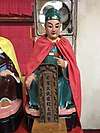 癸亥太歲 虞程大將軍 |
See also
- Sexagenary cycle
- Heavenly stems & Earthly branches
- Chinese folk religion
- Tai Sui (Band)
References
- ↑ Diamond, Kartar (2003). Feng Shui for Skeptics: Real Solutions Without Superstition. Four Pillars Pub. p. 56. ISBN 9780967193786.
- ↑ Press, Beijing Foreign Language (2012). Chinese Auspicious Culture. Asiapac Books Pte Ltd. p. 87. ISBN 9789812296429.
External links
| Wikimedia Commons has media related to Tai Sui. |